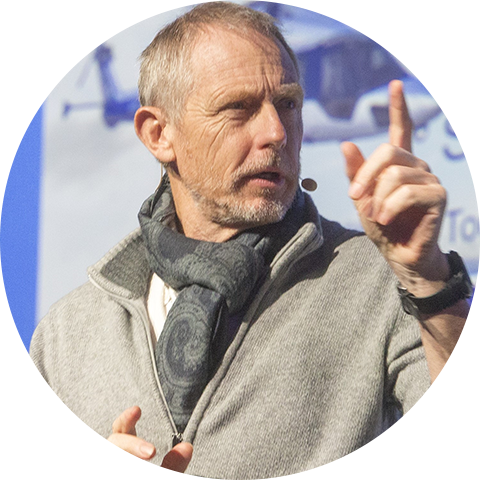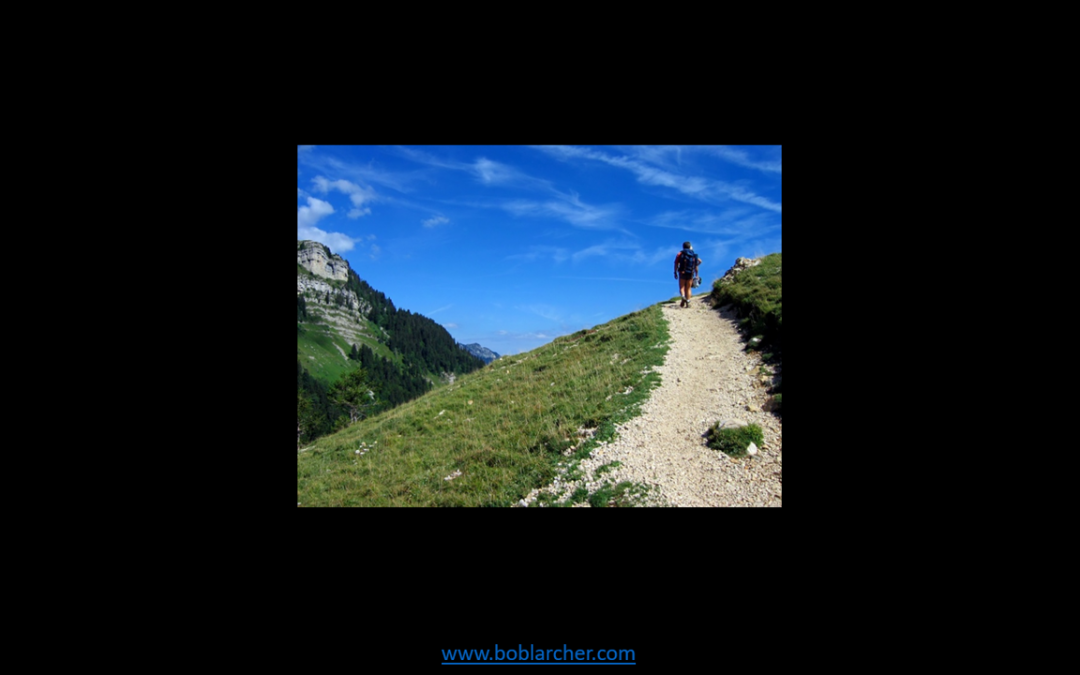I’ve been involved in behavioural development for almost 35 years now and reckon that I have spent close on 4000 days interfacing with groups. I’ve worked with apprentices, students, future managers, first-line managers, project leaders, seasoned managers, directors, vice-presidents and executive teams.
I’ve worked with corporate giants, SME’s, charities and the public sector; sometimes my work is couched under the umbrella of leadership development, sometimes personal development, sometimes professional development and, often, team development.
At the end of the day what I do is help people to develop behavioural flexibility (or adaptability); I help them to learn and develop new or alternative behavioural responses to the difficult situations that they have to face up to.
I would like to be able to write that when people come out of my sessions (coaching, training, workshops, or whatever) that they are like a new person – agile, adaptable, self-confident, in control and ready to take on the world!!
Unfortunately, it’s not the case; and it’s not that I am bad trainer or coach (quite the opposite apparently).
I often hear people telling us that all you have to do in order to change is “just do it”.
It doesn’t work like that, “the road to behavioural change is paved with attitudes”.
It’s not that people don’t want to change (maybe some don’t); thinking about things in a new way and doing things differently is a very complex process.
By the time we reach adulthood, we have stocked, somewhere in our brain, our beliefs, our feelings, our thoughts, our positive & negative experiences – in fact, everything that we experienced in our formative years is firmly anchored somewhere in our brain.
It’s like it has ben stored on a “hard disc”; some of the information is relatively accessible but the vast majority is hidden in our unconscious.
It is this information that allows us to function “without thinking” on a kind of “automatic pilot”; our brain is constantly interpreting what is going on around us and making decisions, without our input or control, as to how we should react.
There are many automatic decisions that we make without really thinking; getting into the car and driving to work, turning on the computer, saying hello to colleagues, etc.
Although useful, our automatic pilot is a hindrance in terms of behavioural change.
As well as our automatic pilot we also have a more “rational” part of our brain which is under our control and allows us to think, as we want to.
Part of my brain may be telling me that the dog charging towards me (see previous article) just wants to say hello, while the other part is telling me to run like hell.
It is as though we have two brains interpreting what is going on; one of them interpreting “stored information” (feelings, emotions, previous experiences, etc) and the other interpreting in a rational logical way (size of the dog, speed the dog is running, tail wagging, etc).
As these two brains do not operate in the same manner and rarely agree on the interpretation of what is going on, we have a potential “conflict” within our head to decide what to do; sometimes the automatic pilot wins and sometimes the more rational brain wins.
When we are calm and relaxed, it’s invariably the logical brain that decides for us; however, in less calm & relaxed situations, like when trying out new behaviours, it is the engrained neural pathways of the “automatic” brain that invariably win out; especially if it is full of previous “negative” experiences and emotions.
So, what does behaviour change look like in the brain?
The neural pathways I mentioned earlier, are made up of chains of neurons; the more we use those neural pathways over the years, the more they become deeply anchored, moving into deeper parts of the brain. It’s a bit like a mountain path; the more it is used the deeper and wider it becomes – this makes it easy to follow but the temptation is stay on the path and not get off the beaten track for fears of potholes, rocks and hidden crevasses.
According to Deborah Ancona, a professor of management and organizational studies at MIT. “By the time we get to the age of 25, we have so many existing pathways that our brain relies on, it’s hard to break free of them.”
In order to change a behaviour, we need to create new neural pathways, and this doesn’t happen overnight; it is a long-term conscious process and it takes many repetitions to master a skill (or for a new behaviour to become a habit) and develop the associated neural pathway.
As Stanford neuroscientist Andrew Huberman explains, our brain chemistry makes it easy to learn new skills when we’re children and pretty brutal to do it when we’re adults, “Mother Nature designed us to learn what we need to learn and do that, reproduce, and die“.
Great sportspeople, great dancers, great musicians go through a long period of conscious practice to become prefect.
As the neurones communicate more & more frequently, the connections between them strengthen and the messages that travel the new pathway begin to transmit faster and faster; it is with repetition that these new behaviours become automatic – the pathways will become stronger with repetition until the behaviour is the new normal.
If you try something a couple of times and then give up, any progress you may have made will be lost. It takes time to form new neural pathways and repetition is needed to strengthen them such that they become the new preferred way of thinking.
According to Rick Hanson (author of Hardwiring Happiness), “Mental activity entails underlying neural activity, repeated mental activity entails repeated neural activity and repeated neural activity builds neural structure”.
Tara Swart, a senior lecturer at MIT and author of Neuroscience for Leadership recommends, trying “energy intensive” challenge that require “conscious processing of inputs, conscious decision-making, complex problem solving, memorizing complex concepts, planning, strategizing, self-reflection, regulating emotions and channelling energy from them, exercising self-control and willpower.”
You need to take up the challenge to change, be committed to successful change, have the self-control to continue the change process and be confident that the changes will happen.

I help people to develop their interpersonal skills, usually within a leadership or teamwork context. If you are looking to develop your leadership, I might be able to help. I’ve been doing this for almost 40 years; roughly four thousand days of seminars, workshops, conferences, coaching, offsites, webinars, etc. – put back-to-back that makes almost ten “full” years.



